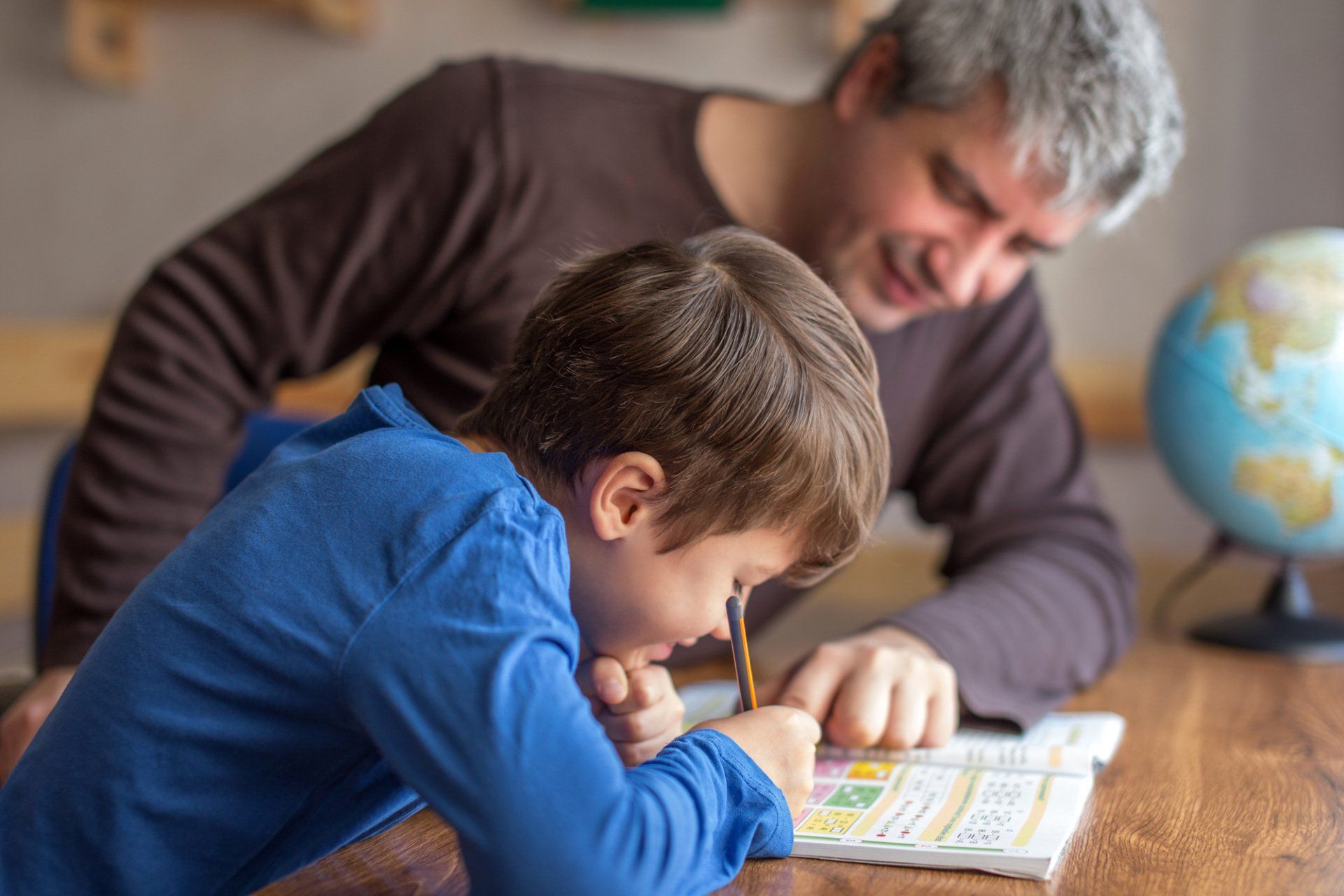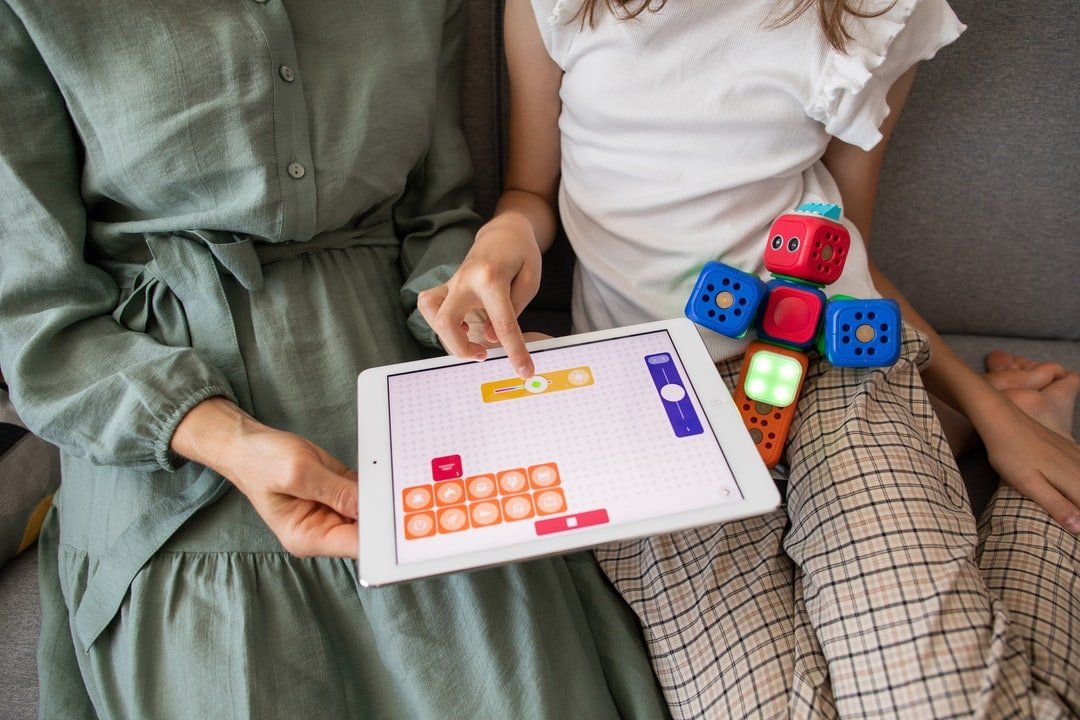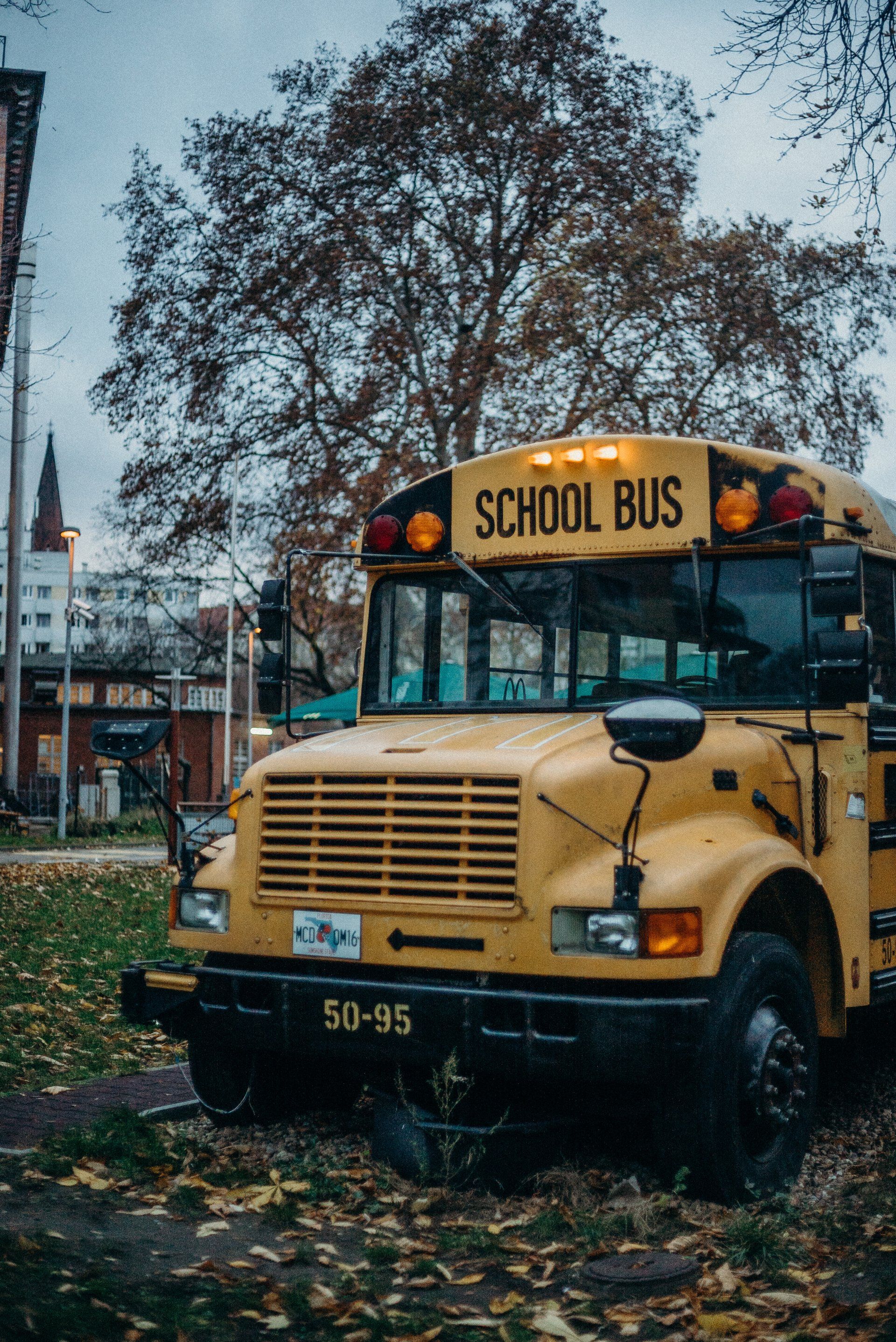Autism Learning Styles: What to Know
November 21, 2021
Different people have different learning styles, and the same is true for students with autism. Read on to learn about the different autism learning styles.
You know how frustrating it can be when your child struggles in the classroom. If you have a child with autism, it can be especially difficult to get the proper
help and resources for them.
The first step is identifying your child's learning style. With that knowledge, you can proceed in finding the right support to ensure their success. Making their school life easier can help encourage higher motivation for learning!
Keep reading to understand the three autism learning styles and how to figure out which one your child relies on.
The Three Learning Styles
Most neurotypical children use multiple learning styles to acquire knowledge. Autism learning theories suggest that children with autism rely on one learning style. That's why identifying your child's education style is crucial.
Many professionals believe that children with autism are
visual learners. Since social skills and language development are often a struggle, children with autism may rely on visual cues. For example, a child might ignore a teacher telling them to sit but respond to a picture of a chair.
Visual Learning
Visual learners are the most common, making up about
65% of the population. Their brain understands and retains information better when provided visual cues.
In an educational setting, visual students prefer to study the text and images in their books. They respond better to picture schedules like timetables and calendars. They might also need explicit written instructions to understand assignments and tests.
Auditory Learning
Approximately 30% of the population are auditory learners. Auditory cues and instructions are essential for their understanding and comprehension.
These students learn through lectures, spoken instructions, and auditory media. They might prefer to listen to the teacher rather than read from their textbook. Group work is also beneficial for auditory learners because they can listen to their peers.
Kinesthetic Learning
The rarest learning style, kinesthetic learners make up about 5% of the population. Also called tactile learners, they prefer hands-on learning and exploring objects.
In the classroom, kinesthetic learners might enjoy manipulating educational tools. To understand abstract concepts like math, they might need to play with beads and wooden bricks. Outdoor education and physical movement are usually some of their strengths.
How to Tell if My Child Is a Visual Learner
Observing how your child interacts with their environment can give you some clues. If your child shows high interest or strong abilities in these areas, they might be a visual learner.
excellent memory
understanding of maps, charts, and graphs
interest in visual arts
creative imagination
strong interest in the environment around them
love of reading and picture books
The challenge with visual learners is minimizing intrusions in their environment. Since they learn through seeing, anything in their field of vision can be distracting. Educators may comment that these students can't seem to sit still and easily lose focus.
How to Tell if My Child Is an Auditory Learner
You can begin to spot signs of an auditory learner even in the infant stage. If your baby loves listening to you speak, musical toys, and nature sounds, you might have an auditory learner. Some other indications that your child learns through sound are:
musical abilities
love of singing or making up songs
listens well to directions
loves conversation
noticing sounds others block out
confident in speaking abilities
A key challenge for auditory learners is a high level of background noise. Learning environments are often noisy and chaotic. Auditory learners can become distracted by classroom conversation or multiple sources of noise.
How to Tell if My Child Is a Kinesthetic Learner
Did your child start crawling or walking earlier than their peers? They might be a kinesthetic learner! Some other suggestions that your child learns through touch and doing are:
excellent spatial awareness and balance
very active
difficulty keeping still/fidgeting
strong abilities in sports, dance, or movement
using gestures and hands when speaking, counting, etc.
strong hand-eye coordination
Understanding abstract concepts might be a fundamental challenge for kinesthetic learners. Conventional classrooms don't use objects to teach subjects like math, especially in post-elementary schools. Therefore, kinesthetic learners may struggle with these topics in middle and high school.
Importance of the Classroom Environment
Some
of elementary-aged children show that the environment is especially important for students with autism. When compared to their neurotypical peers, neurodiverse students preferred the following classroom setting:
bright lights
warm temperature
preference for a variety of learning materials
some light background noise
structured learning environment
authoritative educator
The classroom setting is important for encouraging children with different learning styles. Conventional classrooms tend to focus on auditory learners, with some visual cues involved. Others can get left behind and struggle with understanding or retention.
Sometimes an IEP is the best method to help your child flourish in the classroom. An
Individualized Education Plan can provide the right resources and extra help for every type of learner. They can include autism learning styles and visual teaching methods.
Working With Autism Learning Styles
Finding the right autism learning tools can be complicated and time-consuming. Your child might need an IEP or 504. Alternatively, they might need an education coach. Testing for an autism learning disability can also be helpful.
If you're unsure of where or how to start, you need someone to advocate for you. Working with an educational advocate can make things a lot easier. They have expert knowledge of autism learning styles.
Educational advocates work directly with school districts to implement individualized learning plans. They also offer support and consultation for parents struggling to help their children learn.
Whether you're local to the Seattle area or prefer to work virtually, we can help you! Schedule a free consultation today to start improving your child's educational experience.

Are you frustrated after failing to reach and teach children with ADHD after trying every teaching technique you can think of? It can be difficult to know how to adapt your teaching style to help children with ADHD to have the best possible learning experience. Thankfully there are several strategies that you can make use of to help all children to have the best possible education. If you're wondering how to get better at teaching children with ADHD, read on and we'll tell you what you need to know. Understanding How Children With ADHD Learn the Best One of the first things to recognize about youth who have ADHD is that they seek novelty. Their attention naturally orients towards high-interest kinds of activities. This is why they thrive in learning situations where the curriculum is engaging and active. In order to offer children this opportunity, consider embracing activities that involve physical movement and motor activity. For example, if you are teaching children with ADHD about reading street signs, you should invite the child to be active in order to practice obeying what the signs say. You should also try to give the child options to choose from. By letting them have options, they have more freedom to be curious. This is important because it gives them chance to lean into their strengths in order to learn and grow. Children with ADHD struggle in situations where they get bored, such as while they're waiting for a teacher to draw out instructions for an activity on the whiteboard. If they need to wait for their turn to complete a task, they'll need more stimulation than other children will. They also have a need to feel competent at what they're doing. This is why you should make a point of rewarding the child you're working with by offering things like badges, prizes, high fives, and opportunities for leadership. Teaching Children With ADHD by Recognizing Their Social Needs and Challenges Make sure that you make a point to help children with ADHD to sense their relationships with others. Since social interaction is usually their most valued kind of stimulation, it is imperative that you offer kind support and individualized attention. Kids with ADHD also like to see the emotional responses from others. This is why it's common for them to be attracted to kids who are known to be troublemakers. Many teachers often don't realize that their angry and aggressive responses to children with ADHD who are causing trouble only serve to reinforce the behavior that the teachers are trying to stop. Instead, it's a better idea to be calm and unemotional when trying to redirect a child who has ADHD. Top Strategies Teaching Strategies for Children Who Have ADHD There are many different strategies for children with ADHD that can support them to have the best possible learning experience. Here are several of the most important things that you can do to help them. Match Their Skill Level You should first make sure that you're assigning schoolwork that matches a students' skill level. The reason for this is that they will usually want to avoid classwork that is too difficult to do or that is too tedious for them. Give Many Options You should also give the children as many options as you can. For example, you could offer them a list of ten activity choices for practicing math equations. You might consider using flashcards, writing on the whiteboard, or on their digital device. Visual Reminders Are Important Another of the great strategies for children with ADHD is to provide visual guidance. If you're going to explain a skill such as telling the time, do this by using an overhead projector or a whiteboard in order to explain the activity's instructions. Present Important Concepts in New Ways You could also start finding engaging ways to display important ideas that you want children to work with. One way to do this is by writing these concepts onto bright posterboard which you hang up around the classroom. Encourage Group Participation When you encourage your class to participate as a group, you help children with ADHD to be more engaged in what they're doing. You can do this by requesting students to write responses to exercises on a dry erase board, having students speak responses to questions in unison, and encouraging your class to raise their hands if they agree with something that you say. Go Out of Your Way to Offer Accommodations for Children With ADHD There are many children who will need special accommodations in order to help them to learn in the best way possible. Some of these accommodations could be more complex. Other types of accommodations are straightforward enough that schools for children with ADHD can easily offer them. This might include things like keeping an eye on a student's work or creating a plan to assure that they don't fall behind in class. You should also try giving students more time on the tests they're taking, offering shorter assignments, and breaking longer assignments into smaller segments. There Are Many Easy Ways to Support Children With ADHD Once you know how to start teaching children with ADHD, it's easy and fun for you to do. Many teachers don't understand the unique needs that children with ADHD have. Once they recognize their unique needs, it's much easier to create situations where all of their students can thrive. It's important to recognize that you're not alone in teaching children with ADHD. This is why we offer various services that are tailored for each person who we work with. If you want to support children with ADHD who you work with in the best possible way, please visit our services page in order to find out how we can help you.

The unique parenting journey of a special needs child is a path that is often difficult to navigate. It's a path that may involve different treatments and interventions. It's not what you expected. You listen to the specialists, read all the books, and learn to understand your special needs child. Yet, you may still second-guess the important role that you play in your child's special needs education. You shouldn't. You are your child's expert and greatest supporter. As the parent, you have the most complete understanding of your child's physical, emotional, and social development. Your family dynamic is unique. This dynamic is the continuity in your child's life. Sharing family information may give insight into what is needed in the classroom environment. Involvement in your child's special needs education will make a positive difference in the overall learning experience. So how do you get involved? Learning the educational options available and choosing the best approach to meet your child's education is a place to start. Special Needs Education Special Education is a broad term that refers to services that can be provided for your child. This approach to instruction should address the specific needs of your child's disability. The public school system in your area will determine access and opportunities for your child. Educational standards are also designated by your public school system. Adaptations for your child's physical or movement needs will be given as deemed necessary. This does not mean that your child will be in a special education or a resource room all day. According to the Individuals with Disabilities Education Act (IDEA), children who receive special education services should be in the least restrictive environment. Your child should be learning in the same classroom as other children. This will be made accessible with the appropriate accommodations. Individualized Education Plan (IEP) The Individualized Education Plan is covered under the Individuals with Disabilities Education Act. Teachers, parents, administrators, and other school personnel work as a team to create an educational program. This program is developed to meet the individual needs of the child. The IEP evaluates a child's current educational performance. This will take a look at the special needs of the child, how those needs affect involvement in the classroom, and learning outcomes. The IEP includes reasonable annual goals for the child broken down into short-term objectives. These benchmarks tackle physical, behavioral, or social needs, as well as academics. Any supplemental services or classroom modifications needed to assist the child will also be listed on the IEP. Parental involvement is required at the annual IEP meeting, which can be intimidating. But remember, you are the most important member of your child's educational team. You know your child best. Take the opportunity to ask questions and give input to customize a learning experience that fits your child. The 504 The 504 plan was established in 1973 and is a section of the U.S. Rehabilitation Act. It provides accommodations for students with physical or mental impairments within a regular classroom setting. When a student is not eligible for special education services or an IEP, a 504 plan will provide the modifications for academic success. Like the IEP, parents are part of the 504 team, and accommodations are reviewed annually. With a 504 , a parent can call for a plan review at any time to evaluate academic concerns or request other appropriate changes. Your involvement in the process will assist in customizing your child's educational experience. This can ensure your child's academic and social success. Parent as Educational Partner There is no one more invested in your child's success than you, the parent. You understand your child's specific requirements to function happily in life. Embrace your role as an educational partner and become a proactive parent. Through interactions and observations of your child, you can share changes or discoveries with the education team. By sharing this information, you offer the educators insight into behaviors that may not be observed in the classroom. Your continued involvement as a parent will increase your child's chance for personal and academic success. Development The role of parents in special needs education is to assist in helping your child's development. You understand there are many challenges ahead, but there will also be many triumphs. The developmental path may not be typical, but you want your special needs child to have the support necessary to meet as many milestones as possible. Communicate with your education team. Let the teachers know you are invested in supporting classroom efforts at home. Partnering with your child's teachers will reinforce the learning efforts on both sides. You understand that your child's development may not be a straight line. Know that each step achieved by your child is an extraordinary success. Advocate All that you do for your child comes from a place of love and caring. Advocating for your child requires research and explaining the disability. You will need to have many conversations with each professional involved in your child's life. This can be exhausting, yet you soldier on. As the parent, you believe in your child and know you must act on their behalf. As an advocate, your parental involvement in special needs education will give the teacher a better understanding of your child. Through advocacy, you will establish the foundation for future conversations. This will build a cooperative relationship that benefits your child and helps them grow. You Are Not Alone As a parent, understanding the pathway of a special needs education for your child is difficult. Yours is not a typical road of parenting. You may worry and second-guess decisions. There may be many potholes along the way, making you feel unsure and discouraged. You are not alone. Aliada Educational Advocacy, My Learning Ally , offers support and consultation for parents learning to navigate the educational system for a child with special needs. Experienced consultants are available to listen to your concerns and work with you to find the best solutions for your child. Reach out to us . We are here to help.


